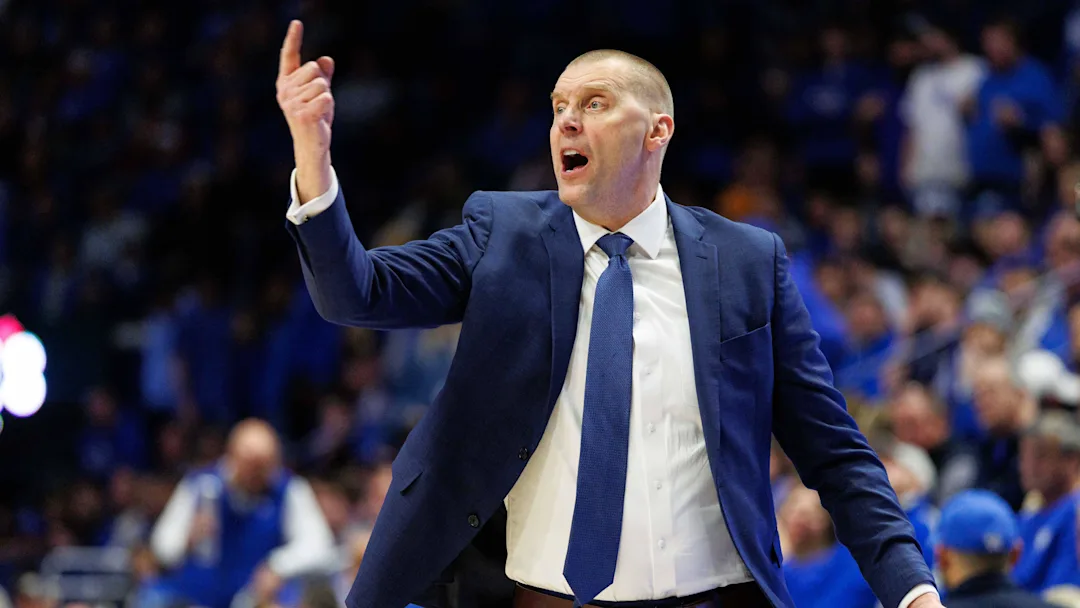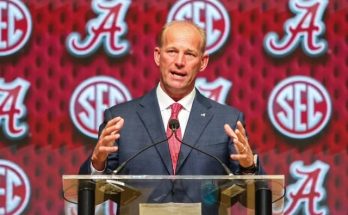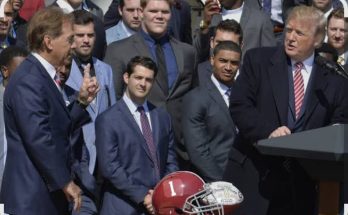Mark Pope, the head coach of the Kentucky Wildcats men’s basketball team, has never been one to shy away from bold ideas. Known for his energy, charisma, and forward-thinking approach to the game, Pope is now setting his sights on something that could dramatically alter the landscape of college basketball: expanding the length of the season.
In an era where discussions about player compensation, transfer portal chaos, and the ever-growing influence of NIL deals dominate the college sports conversation, Pope is steering the spotlight toward the structure of the game itself. His latest proposal? A longer, more robust college basketball season—one that could extend significantly beyond its current framework. While the idea may sound radical to traditionalists, Pope makes a compelling case grounded in logic, economics, and a genuine desire to grow the sport he loves.
Pope’s reasoning begins with a simple yet powerful question: why should college basketball cede so much of the national spotlight to college football? For years, basketball has lived in the shadows during the fall semester, waiting patiently for college football to wrap up its regular season and bowl games before stepping into the limelight in late December or early January. As a result, the early parts of the basketball season often go unnoticed, buried beneath the avalanche of gridiron storylines and playoff implications. Even marquee matchups featuring blue-blood programs struggle to gain traction until football winds down.
By expanding the season—both in terms of the number of games and the calendar window—Pope believes college basketball can reclaim more of that lost visibility. An elongated season would mean more opportunities for fans to engage, more media coverage, and more chances for players to develop on a national stage. The added exposure would not only benefit teams from a branding perspective but also enhance the sport’s commercial value. More games mean more television slots, more ticket sales, and more marketing opportunities—all of which could translate into financial windfalls for athletic departments and conferences.
Pope has also highlighted the developmental benefits of a longer season. As he sees it, college basketball is one of the few major sports where the most important games occur early in the calendar year, shortly after players have had limited time to gel with teammates and fully grasp complex systems. Many freshmen, transfers, and even returning players often hit their stride only after the season is halfway over. A longer schedule would give teams more runway to grow, iron out flaws, and compete at a higher level for longer stretches.
From a coaching standpoint, this added time would be a godsend. It would allow staffs to implement more nuanced offensive and defensive schemes and foster deeper chemistry among teammates. Pope argues that the current format rewards teams that come together quickly, not necessarily the ones with the most talent or potential. A longer season would level that playing field, giving teams ample opportunity to reach their ceiling without being rushed.
There’s also a recruitment angle to consider. High school stars and transfer prospects alike are drawn to environments that offer maximum exposure and development. If college basketball can offer a platform that more closely resembles the NBA in terms of game volume and preparation, it might stem the growing tide of elite players skipping college altogether in favor of professional routes like the G League, international leagues, or even the NBA’s new development pathways. For Pope and many of his peers, an expanded season could be a powerful recruiting tool in an increasingly competitive landscape.
Pope’s plan isn’t without challenges. Academic calendars, athlete workload, and travel logistics are significant hurdles that would need to be addressed. Critics argue that a longer season could place additional strain on student-athletes already juggling a demanding mix of coursework and competition. Extending the season might mean more missed classes, increased mental fatigue, and higher risks of injury. These are valid concerns, and Pope has acknowledged them, insisting that any expansion must be accompanied by thoughtful reforms in how programs support their players.
One possible solution he has floated is the strategic spreading out of games over a longer timeframe, reducing the current intensity that sees teams play multiple times per week for months on end. A more even distribution of games could improve recovery time and lessen the risk of injury while still allowing for a longer campaign. Advances in sports science, training, and academic support systems make such a model more feasible today than in years past.
Additionally, Pope envisions a scenario where marquee matchups and rivalry games are better spaced out to maximize excitement throughout the calendar. Instead of packing most conference battles into the crowded winter months, why not feature them across a broader spectrum, drawing in casual fans and giving the sport more consistent relevance throughout the year?
There is also precedent for this kind of shift. Other sports—both collegiate and professional—have adapted their calendars to suit growing demand and evolving market dynamics. College football expanded its regular season and introduced conference championship games, the NFL added a 17th game, and even Major League Baseball and the NBA have flirted with schedule adjustments to boost engagement. Pope’s proposal fits within this broader trend of sports evolving with the times.
The coach is not advocating for change just for the sake of novelty. At its core, his push for a longer season is rooted in a deep love for the game and a desire to see it flourish. In his view, college basketball has all the ingredients to be a year-round national obsession—it just needs the right framework. By adjusting the structure of the season, he believes the sport can capture new audiences, retain top talent, and elevate the overall quality of play.
Pope’s approach has already begun to spark conversations among fellow coaches, administrators, and media members. While some remain skeptical, others see potential in his vision. It’s likely that any major overhaul would require the NCAA and major conferences to act in unison—a daunting task given the fractured nature of college athletics today. However, the growing influence of television partners and the ongoing arms race in revenue generation may ultimately tip the scales in favor of expansion.
One thing is clear: Pope is not afraid to challenge conventional thinking. His career has been marked by a willingness to adapt, whether it was his transition from a role player in the NBA to a head coach at BYU, or now taking over one of the most storied programs in college basketball. His vision for an expanded season is just the latest example of his commitment to pushing boundaries in pursuit of progress.
For now, the idea remains in the proposal stage. But as more stakeholders begin to consider the possibilities—and as college basketball continues to search for ways to stay relevant in a rapidly changing sports world—Pope’s voice is likely to grow louder. Whether or not his vision becomes reality in the near future, it has already done something important: it has started a conversation about what college basketball could be, not just what it has always been.
And that, in itself, is a victory for innovation.
Mark Pope isn’t just thinking about winning games—he’s thinking about winning the future of college basketball.



